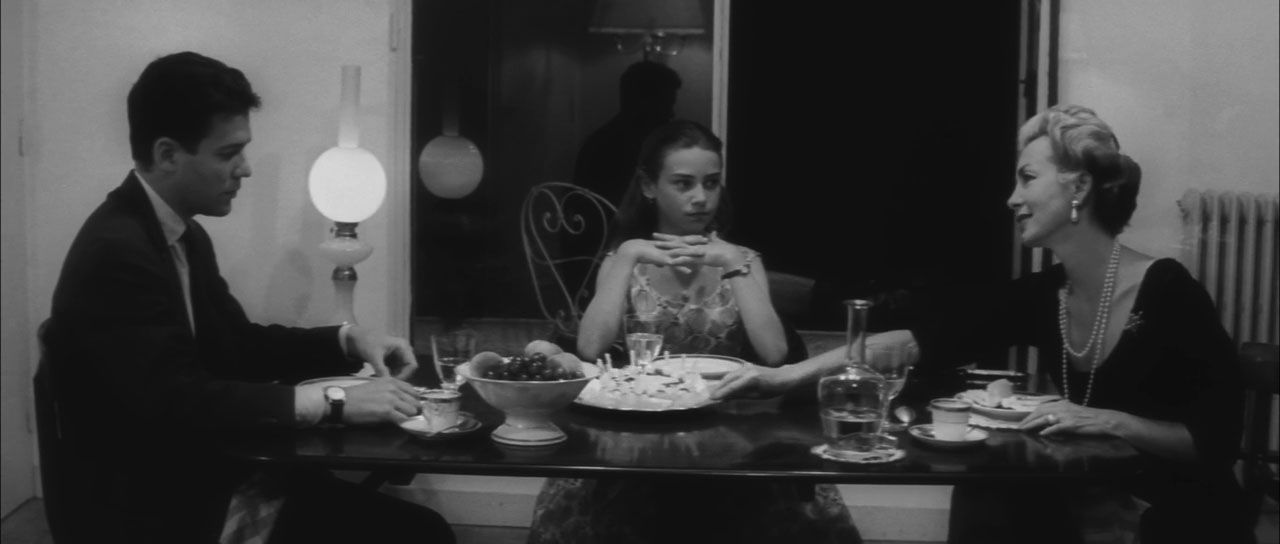“We’re alone and we stay alone. But what counts is to want something… no matter what the cost. There’s a bit of happiness in simply wanting happiness.”
Oops, we were supposed to end Agnes Varda Month with Jacquot de Nantes but I couldn’t get the subtitles to work, so we watched Jacquot’s own Nantes-set first feature. Not a musical like we’d hoped, but a gorgeous widescreen black and white, slightly melancholic drama with a lovely Young Girls of Rochefort-reminiscent ending.

Our listless hero is Roland (Marc Michel of Le Trou), who just wants to get out of town until he meets his crush from a decade ago, dancer Lola (Anouk Aimée). He sticks around to see if anything will happen between them, but she’s not interested, waiting for her long-lost love (and father of her child), messing around with an American soldier (New Jersey native Alan Scott who speaks hilariously horrid French) in the meantime.

Separately, Roland and the soldier also meet a young teen girl named Cécile, and Roland meets her lovesick mother (Elina Labourdette of Bresson’s Les dames du Bois de Boulogne) who tries in vain to distract him from Lola. Roland kills time at his favorite cafe with a woman in her 60’s (one of the card players in La Rupture) who talks about her son who has been away for too long. Everyone turns out to be connected – she’s the mother of Lola’s missing boyfriend who returns home to them in the final scene – giving Nantes a small-town feel, but it’s made small through the characters, not by the crane shots which make Rochefort look like a stage set.

Demy’s cinema is interconnected: Lola returned in Model Shop and Roland is the guy who marries Catherine Deneuve in The Umbrellas of Cherbourg.
NY Times: “Cécile, it’s worth mentioning, is Lola’s real name. All these people are to some degree reflections of Lola or her vanished lover, and part of the pleasure of the movie lies in watching Demy choreograph this intricate play of mirror images as the characters flicker past one another – sometimes recognizing themselves, fleetingly, but more often not.”
R. Bergan: “Its circular construction, frothiness, and long tracking shots are reminiscent of Max Ophüls, the film’s dedicatee.”
Summer 2015: Watched again from the new blu-ray, replaced screenshots.
